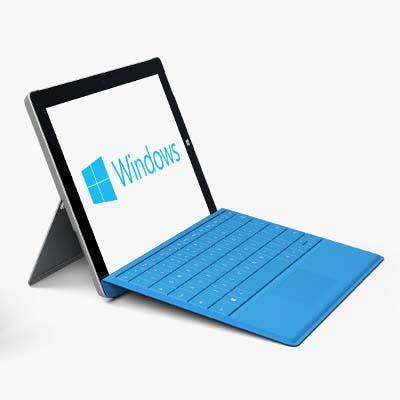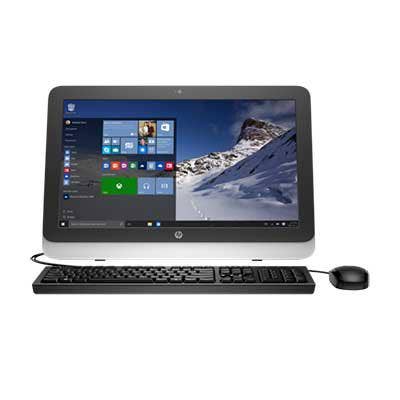IDC: 10 Factors Impacting The Tablet And 2-In-1 Markets In 2015

Tablet Market Struggles, 2-In-1 Market Succeeds
Market research firm IDC recently released its worldwide tablet and 2-in-1 device forecast for 2015, outlining some of the struggles and successes of each device set.
Tablet shipments globally are expected to decline 8 percent in 2015, according to IDC. This hardly comes as a surprise, because of the devices' long replacement cycle and the customer preference for 2-in-1 devices -- which are expected to grow 86.5 percent in 2015, according to the report.
IDC outlined some interesting impacts that are influencing the tablet and 2-in-1 markets, showing what partners can expect for sales of each device in 2015 and the coming four years. Following are 10 insights impacting the state of the mobile device market.

1. Android Tops Tablet And 2-In-1 Market
The top operating system on tablets and 2-in-1s in 2015 is expected to be Android, according to IDC.
The Android OS will take 66 percent of the market share, but will face a 10 percent decline in shipments year over year from 2014. In 2019, Android is expected to continue declining and will drop to take 56.6 percent market share.
The Android tablet ecosystem's struggles come from the operating system's lack of appeal for the commercial market and long device replacement cycles. However, Android's 2-in-1 portfolio is gaining traction, according to IDC, because of the devices' lower price points.
A slew of popular Android tablets have led the market in 2015 already, including the Samsung Galaxy S 8.4, Lenovo Yoga Tablet 2 and Google Nexus 9.

2. No Growth For iOS In Coming Years
Apple's operating system, iOS, is expected to rank the second most popular OS in worldwide tablet and 2-in-1s in 2015.
IDC expects iOS to take 25.5 percent of the tablet and 2-in-1 market in 2015, down 14.6 percent from 2014. That level of market share is expected to stay the same in the next few years, reaching 25.9 percent of share in 2019, according to IDC.
Apple has yet to release a 2-in-1, but the Cupertino, Calif.-based company's iPad tablet line has been successful in a struggling tablet market over the past few years. Apple is expected to release an iPad Pro in the fall, which will feature multi-tasking aspects of the company's newest iOS 9 and appeal to the commercial segment.

3. Windows Strength In Tablet and 2-Iin-1 Market
While Android and iOS tablet and 2-in-1 device shipments in 2015 are expected to decline, devices running on Windows will experience an explosion of growth this year, according to IDC.
Windows tablets and 2-in-1 devices are forecast to take only 8.4 percent of the market share in 2015, but that is an almost 60 percent increase from last year, according to IDC. Looking ahead to 2019, Windows will continue growing in the tablet and 2-in-1 market to gain 17.5 percent market share.
Microsoft's Surface Pro 3 contains several features that are appealing to the enterprise, including a kickstand and keyboard. The Redmond, Wash.-based company also recently expanded its channel reseller ecosystem, enabling more sales in the commercial segment.

4. Other Operating Systems? Barely Existent
Other than Android, iOS and Windows, other operating systems are expected to take only a sliver of the tablet and 2-in-1 market in 2015, according to IDC.
Other operating systems will take only 0.2 percent of the market in 2015, after a 15.8 percent year-over-year decline from 2014. The decline stems from other operating systems, like Windows, gaining traction in these two device markets.

5. 2-In-1s Gaining Traction
While the tablet market is slowing down, 2-in-1s and detachable devices are slowly gaining traction.
According to IDC, the 2-in-1 segment will grow 86.5 percent year over year in 2015 as more OEMs begin to get "more serious" about the market, and as consumers begin to utilize 2-in-1s as an alternative to pure tablets with smaller screens.
"[IT departments] will start migrating some [of] their portable PC and tablet installed base towards 2-in-1's, which will accelerate the adoption of the form factor," said IDC Tablet Research Director Jean Philippe Bouchard in a statement. "So far, this category has been the led by Microsoft with its Surface product line."

6. Tablet Market Declines
The tablet market has been declining over the past few quarters, and that trajectory will not change in 2015, according to IDC.
The worldwide tablet market is expected to decline 8 percent in 2015, representing a significant slowdown from IDC's previous forecast of 3.8 percent for 2015.
Tablets have faced a sluggish market because of several factors: As the integration of devices gets better, 2-in-1 and laptop sales will continue eating into tablet sales, according to IDC. The long replacement cycles of tablets have also put a strain on the device market.

7. Commercial Uptake Of Tablets And 2-in-1s
According to IDC, the commercial segment has been "reluctant" to migrate toward tablets, because of an unclear value proposition.
Meanwhile, the 2-in-1 market may be appealing to businesses in the future, but IT buyers have been slow to move to other devices beyond smartphones, according to IDC, and do not see tablets or 2-in-1s as a real replacement for PCs yet.
2-in-1s are expected to experience a boost in the commercial market once commercial segments evaluate the benefits of Windows 10 and Intel's Skylake microarchitecture, which will be prevalent in 2-in-1 form factors.

8. Slate Tablet Price To Drop
According to IDC, the average selling price of slate tablets will drop below $300 in 2015, in part because of competitive pricing levels brought to market by low-cost Android models.
An increase in smaller, 7- to 8-inch screened whitebox devices will drive the average selling price down, according to the report. These devices have been created by unknown OEMs to meet growing demand for markets like Africa and the Middle East.

9. Larger-Screened Tablets And 2-In-1s To Grow
IDC said it expects larger screened devices to grow in popularity in the coming year. For example, larger-screened tablets and 2-in-1s, with screens exceeding 10 inches, will grow from 18.6 percent in 2014 to 39.5 percent in 2019.
This growth is because of the demand for phablets, or large-screened smartphones, in the market, as well as the increased productivity features that large-screened devices bring to the enterprise, such as multitasking abilities.
Apple's new tablet, the iPad Pro, will reportedly follow this trend by containing a larger, 12.9-inch screen.

10. New Device Launches
With new trends emerging for tablets and 2-in-1s in 2015, IDC expects a "flurry of new devices" to launch from August through December 2015.
Among these potential new devices is Apple's new iPad Pro, which reportedly will be released in the fall. The launch of Windows 10 and its impact on the commercial segment's interest in new portable devices, as well as the introduction of Intel's sixth-generation Skylake microarchitecture, which is expected to bring enhanced performance features for 2-in-1s, will also drive new device launches.